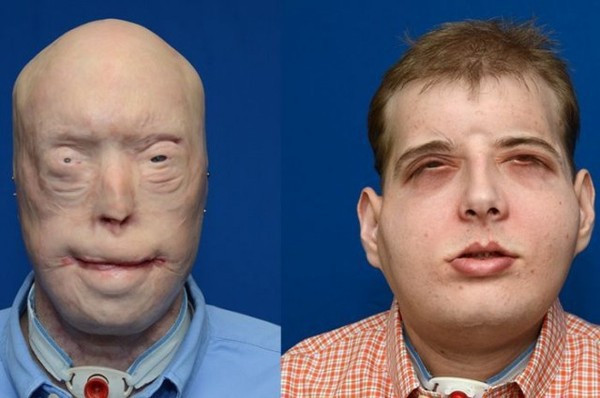French doctors have made history, when transplanted a second face for the same person
Each part or the entire face of the deceased donor is transplanted to the living patient.
While head-to-head procedures are thought to be impossible at the present time, face transplantation has been performed by doctors during the past 12 years. Even a French man has been up to 2 times and it is a new development of this procedure.
40-year-old patient, previously, was kept in a coma for 2 months in the absence of a face. Doctors had to "untie" his old face, also received from another transplant seven years ago, because the body excreted it violently.

Patrick Hardison, an American firefighter, has a face transplant in 2015 after an occupational accident.
Hope for patients
Twelve years ago, a group of surgeons in France successfully performed the first human face transplant in history. Since then, there have been nearly 40 similar surgeries taking place in 7 countries in the world.
Human face transplantation is a procedure for people with severe deformed faces, due to illness or illness that cannot be restored by plastic surgery. In it, the doctors will collect each part or the entire face of the deceased donor to transplant to the patient.
Face transplant can help patients recover lost functions due to distortion, such as vision, respiratory, eating . Even so, like all other types of transplant, face transplant from people one to another has a great risk of elimination.
Unfortunately, that is the case of another French patient, first matched 7 years ago. By 2017, the 40-year-old's immune system has attacked the graft face so badly that doctors have to remove it.
He was put in a coma for 2 months without a face. Recently, doctors have once again grafted his new face. It is not clear what the prognosis of this man will be, but the doctors say the transplant was initially successful.
'This is the first time re-implanted [face] can be confirmed for people with chronic elimination,' the French health agency said. Of all nearly 40 face transplant cases performed so far, at least 6 patients have died from excretion.
If this transplant is successful, it may reinforce the hope for unfortunate patients to perform this complicated surgical procedure.

There are nearly 40 face transplants performed in the world.
New face, new life
As mentioned, it can help patients with deformed faces because of accidents or illness. Procedures can last from 8 to 36 hours. In it, the doctor will separate the face of the donor (dead), which can include fat, nerves, blood vessels, bones or muscle systems.
This face will be implanted partially or wholly into the new owner. If the surgery is successful, they can leave the hospital within 10-14 days. However, like all other types of organ transplants, patients will have to take anti-rejection drugs for life, to reduce the immune system's attack on their 'non-own' faces .
Facial transplants are at high risk of complications and infections. The anti-rejection drugs themselves, which suppress the immune system, also put patients at risk, such as infection or even cancer.

Despite many complications, many patients still choose facial graft.
However, many patients still choose this type of surgery, because as they say, the face can bring a new life. Face transplantation can allow recovery of functions that are damaged by facial deformities, such as vision, breathing, eating, talking. Patients can also express their emotions again, while not facing a malformed face.
'It may be someone else's face, but when I look in the mirror, I see myself ,' said Isabelle Dinoire, the first French woman to have a face transplant.
After being attacked by a dog, Isabelle's face was deformed, leading to her decision to transplant her face. The side effects of anti-rejection drugs made Isabelle develop two cancers.
After 11 years of owning a new face, Isabelle died at the age of 49 in 2016.
- Research helps identify the richness of the face
- Looking at the face guessing the personality of the person
- Thai bird flu can spread from person to person
- Poland successfully performed the first face transplant
- All of us are
- He allowed the whole face transplant surgery
- When tattoos are medical sensors
- His face cried on the ice
- China will be grafting its head for the first time in history
- Consumption of a 230-year-old French plant was destroyed by Australian customs
- The face revealed about childhood
- The complete nose is on the arm
 Green tea cleans teeth better than mouthwash?
Green tea cleans teeth better than mouthwash? Death kiss: This is why you should not let anyone kiss your baby's lips
Death kiss: This is why you should not let anyone kiss your baby's lips What is salmonellosis?
What is salmonellosis? Caution should be exercised when using aloe vera through eating and drinking
Caution should be exercised when using aloe vera through eating and drinking